
Fifteen years ago, my wife Shana and I bought a little farm on twelve acres in southcentral Pennsylvania. It was all we could afford at the time — maybe even a bit more than we could afford.
We loved the rolling hills, the wildlife, the meandering creek. We even loved the 200-year-old log cabin farmhouse. There was only one problem.
It needed everything.
Since then, we’ve done all kinds of work on the property, from renovating the farmhouse; to building our dream retirement barn home; to establishing an orchard and an experimental passive solar greenhouse.
Along the way, we’ve learned a lot about building in a remote location. Here’s hoping our hard-won experience can save you some time, money, and trouble.
1. Find Your Delbert
In our first years on Saint Peters Church Road, we had a hard time finding good help with projects. A typical search for a tradesman would go like this: we’d ask our trusted neighbors for a recommendation. They’d oblige with a name.
Then we’d contact the tradesman, only to learn he was scheduling appointments for several months out.
Well, that wouldn’t do, so we’d find someone who was available right away. This often led to problems, and, in some cases, having to redo the work.
We were used to living in a city where contractors and subs were abundant. We didn’t understand that there might be only a handful of plumbers covering our whole county — and maybe even just one, if you wanted the job done right.
Things changed when Delbert entered the picture.
Delbert is the manager of the local power equipment service center. I liked his operation from the moment I walked in. The place was clean, well lit, and staffed by helpful, friendly young people.
One day, as Delbert was showing me the finer points of setting the tension on my chain saw, it occurred to me to ask him for a recommendation for a fencing contractor. He gave me a name. I hired the fellow, and the deer fence around our new orchard went up without a hitch.
After that, I started calling Delbert for recommendations on all sorts of services. Most of his contacts happened to be Mennonite, like him. All I needed was an introduction to his community.
Every name he’s given me has been solid gold.
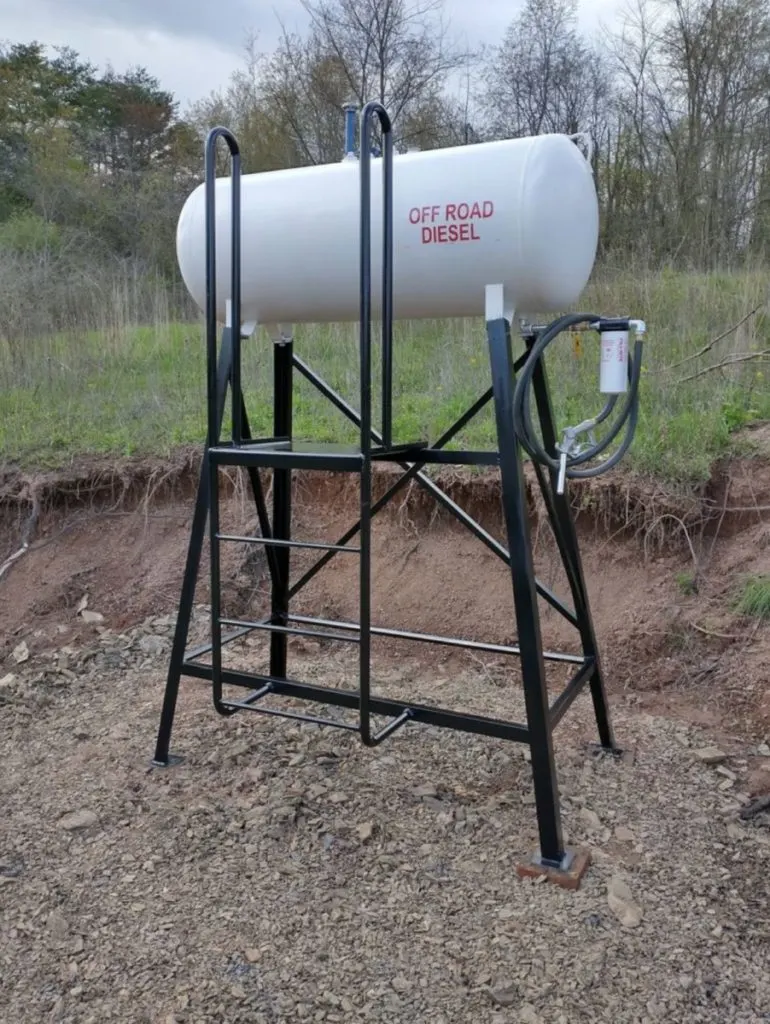
2. Don’t Skimp on Infrastructure
It’s tempting to think of an undeveloped piece of land in terms of the cost of the dream house you’re planning to build on it, but a lot of the expense of rural construction happens long before the foundation goes in.
This will come as no surprise to anyone who’s already started doing their homework.
Even so, it’s incredibly easy to underestimate the cost of, say, establishing a gravel lane to your future home.
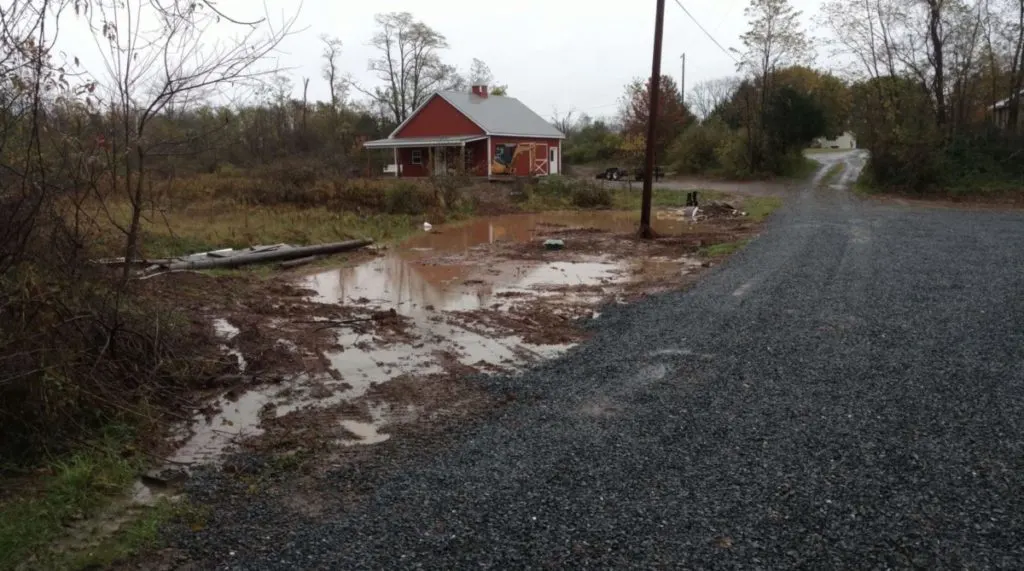
If your property drains a lot of the surrounding hills, like ours does, then you may have to lay special geotextile fabric before you spread your gravel or shale. Skipping the fabric step can actually cost you much more in the long run when the spring mud swallows all your expensive stone.
The same is true of drainage. While not very glamorous, the importance of proper site prep and grading for the long-term health of your home cannot be over-emphasized. An expert excavator can be expensive, and the work itself can leave ugly, if temporary, scars on the landscape.
But however much proper site prep might cost, it’s a lot cheaper than correcting water issues somewhere down the line.
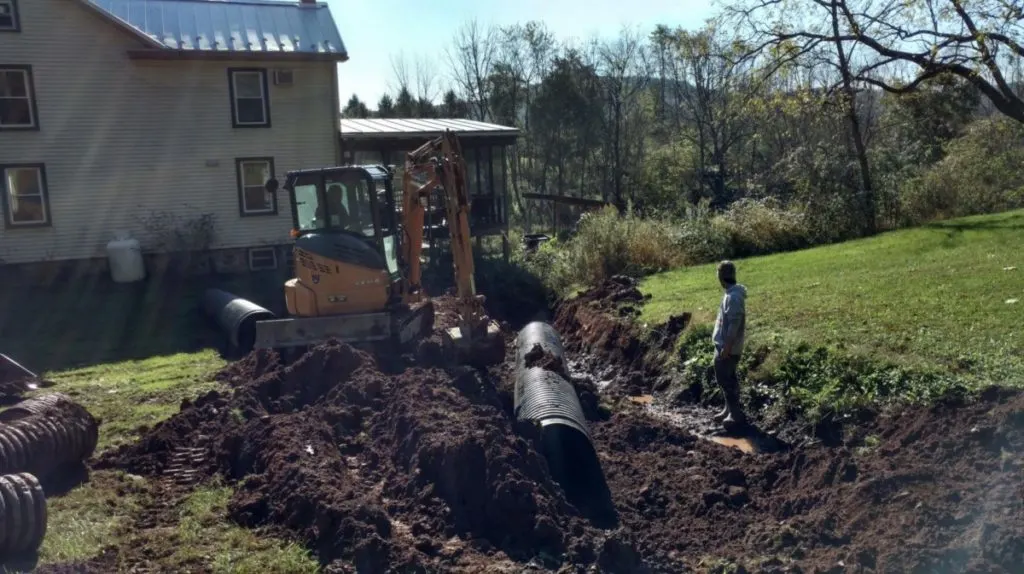
Long before you buy a piece of land, it’s wise to get a reliable, real-world estimate of the costs of establishing water, power, Internet, and sewerage. Depending on local conditions, those expenses might gobble up your entire budget.
3. Your Neighbors May Have Hidden Talents
Cities tend to encourage specialization, but life here in rural Perry County still requires a fairly broad set of general skills.
“Do-it-yourself” is more than a catchphrase in these parts. It’s an ethos.
Over the years, we discovered we had a need for a certain kind of carpenter — not a contractor, mind you, but a good, old-fashioned carpenter for projects that were slightly too large for me alone.
Building a carport, for instance. Or assembling a large pergola.
As it turned out, the answer was around the corner.
One of our neighbors suggested that we call a father and son who live half a mile down the road.
This time, when we heard how busy they were, we decided to be patient and wait our turn.
That decision paid off. Now, not only do we have a good resource for those odd-sized jobs that require an extra pair of hands, but we’ve also deepened our ties to the neighborhood.
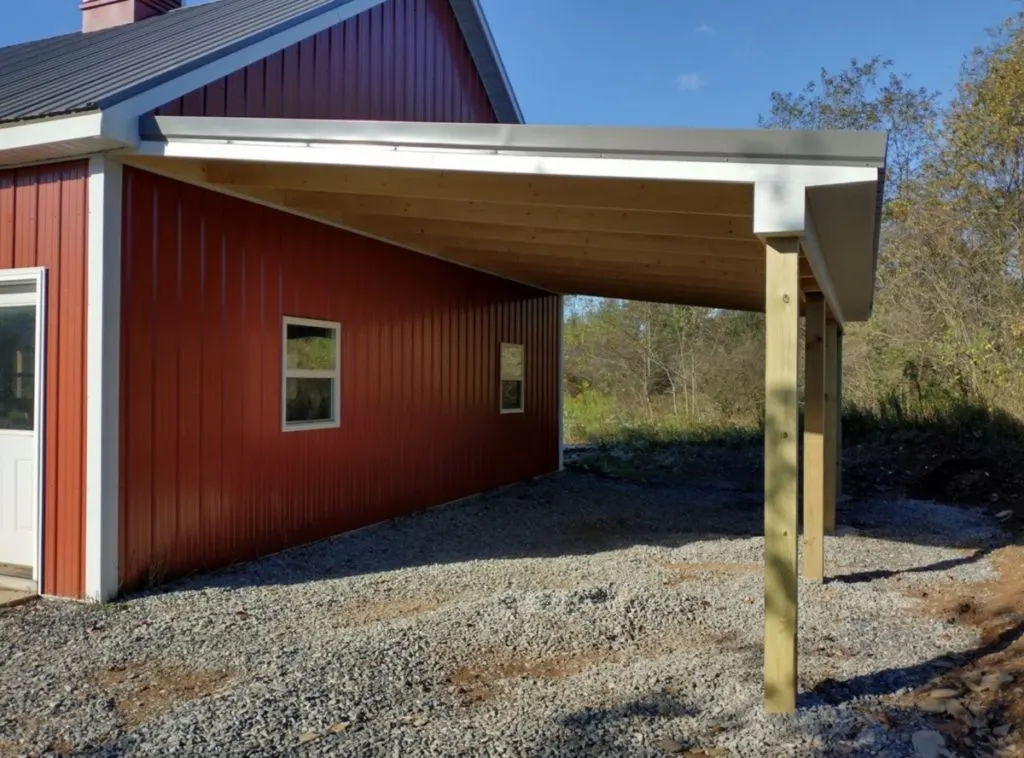
4. It Pays to Support Your Local Hardware Store
If you’re building in a city, virtually all your needs can be met by a big box store. Those stores are still within striking distance of us here in the countryside, but nipping over to the Lowes or the Despot (as I like to call it) takes a minimum of an hour and a half.
For bulk electrical and plumbing supplies and for most sheet goods, it’s still worth a trip over the mountain, but for bread-and-butter items like framing lumber and ordinary fasteners, I prefer to drive twenty minutes to our local hardware store.
Yes, the cost is typically a bit higher.
These small businesses can’t compete with the big boys on price, but they often offer excellent service. If you take the time to introduce yourself and get to know the faces behind the counter, you might find that they’ll accommodate your building needs much better than a corporate megamart.
For instance, we’ve found the lumber to be of generally higher quality than the box stores, and deliveries to our remote address to be much more reliable.
We’ve also gotten excellent advice on the materials and products best suited to conditions here in the county.
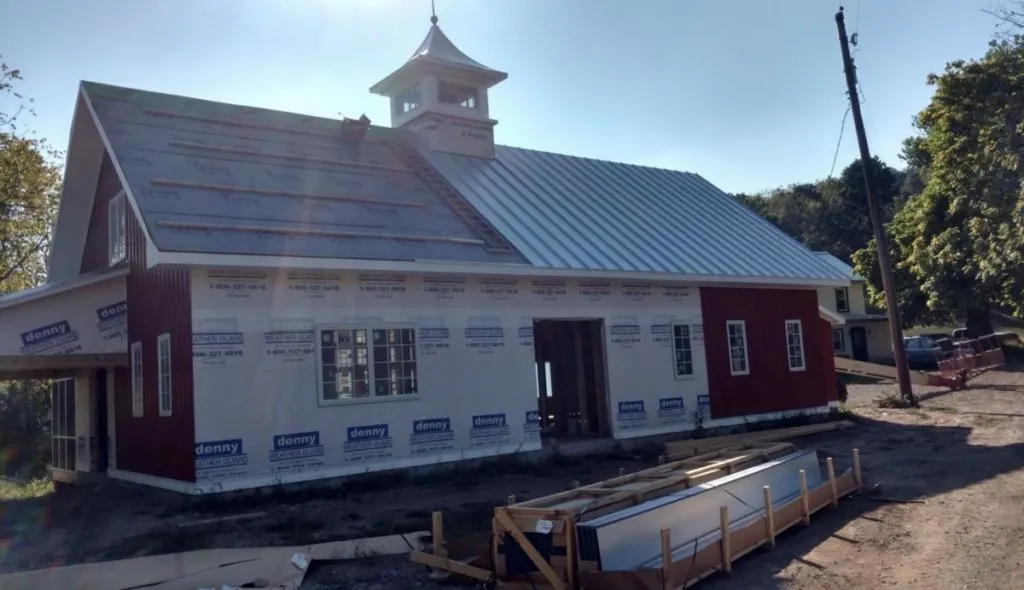
Your local building supplier might be reluctant to recommend specific contractors — they don’t want to be caught playing favorites! — but you can often get good information from a friendly chat by the register.
They probably won’t mind telling you whose guys are always busy — and whose aren’t.
5. Find Tradesmen You Trust, and Trust Their Recommendations
I’ve always preferred to do my own research when it comes to choosing appliances and equipment, but life in the country tends to push you in a different direction.
Consumer Reports or Wirecutter may tell you what brands and models represent the best value, but they won’t tell you how easy — or difficult — it’ll be to find someone to service their “Budget Pick.”
For a long time after we bought this place, when it came time to buy a major piece of equipment, be it a back-up generator, furnace, or an air conditioning condenser, we followed our old pattern: do the homework; buy the “top-rated” thing; and then figure out how to get it installed.
Eventually we realized we were doing it backwards — at least for life out here in the hinterlands.
Now that we’ve developed relationships with trusted tradesmen, our approach is simpler — and more humble.
We don’t point to a pallet and say, “Please install that well researched, excellent thing for us.”
Instead we ask, “What brand do you like to service?”
This is especially true of fancy appliances. You might enjoy it for a while, but when it breaks down — and it will — you may discover that the closest service tech who covers your county is based two states over and charges handsomely for travel time.
Don’t ask me how I know this!
6. If It’s Cutting Edge, Be Prepared to Install it Yourself
We’ve found a wealth of building experience and talent in our county — and often for prices that make our city friends green with envy. But we’ve also encountered a very conservative philosophy of building.
By that I mean a deep reluctance to change the old ways and innovate.
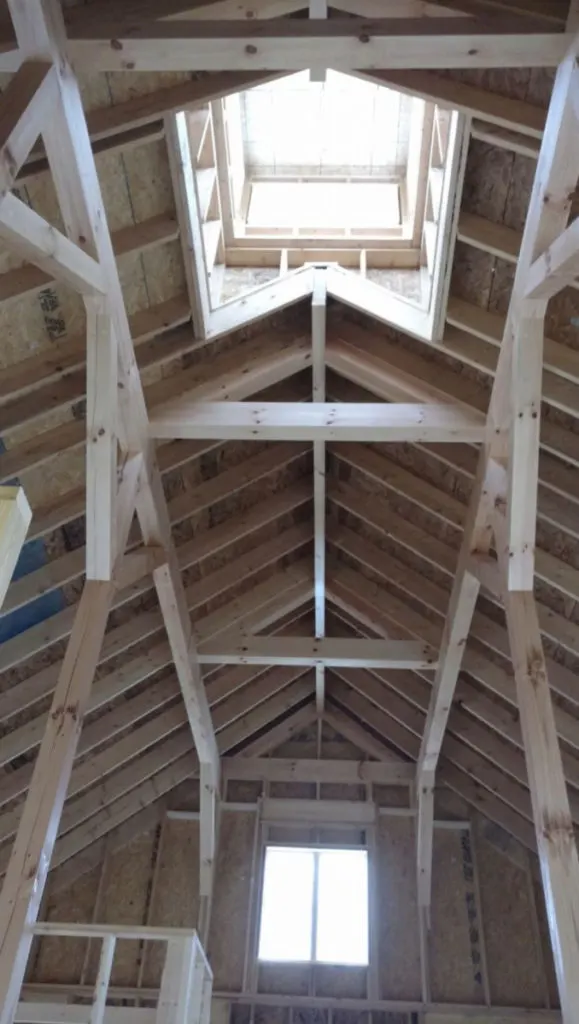
This has benefitted us greatly on the one hand — often the old ways really are the best ways — but we think of ourselves as forward-looking people.
If a standard pole barn is what you need, or a traditional standing seam metal roof, or some straightforward plumbing or electrical work, our friends in the county have you covered.
But you can imagine the looks I got at the hardware store when I first described our passive solar greenhouse — heated and cooled only by barrels of water!
If you’re interested in experimental, state-of-the-art building technology, and you happen to be building in a remote location, be prepared to roll up your sleeves and install it yourself.
For instance, the lighting in the Superbarn.
We decided early in the planning to make all of the lighting eco-friendly LEDs, but how do you go about lighting a post-and-beam barn with them?
We only had one shot at it, since wiring and installing lights high in the framing required the use of an expensive rented scissor lift. I asked several electricians in the county for lighting ideas, but none of them had ever lit a building like the Superbarn.
Reluctantly, I turned to the big city for talent.
I found an architectural lighting specialist with experience in post-and-beam structures who was willing to drive all the way out to our farm.
She showed me pictures of post-and-beam frames that were uplit by long strips of architectural LEDs powered by specialty LED drivers.
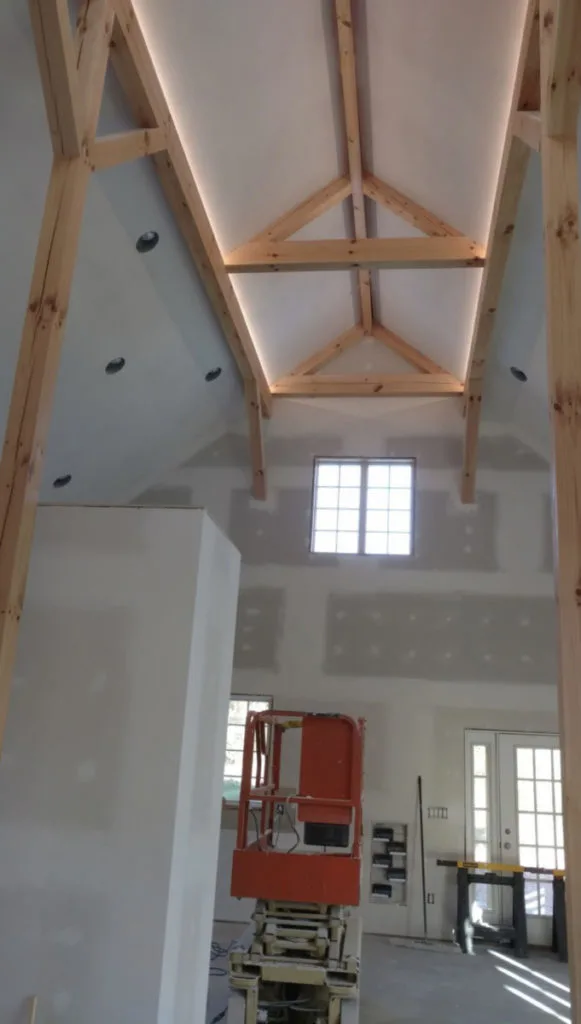
In the end, the lighting plan she created for us wasn’t terribly expensive. She even offered to let us use her professional discount when it came time to buy the equipment and fixtures. The savings wound up covering her entire fee.
As I wrote her a check, she asked, “So who’s going to do the installation?”
I said, “You’re looking at him.”
In other words, be aware that some of your building choices may involve becoming a specialist yourself.
If you like the sound of that — and obviously, I do personally — then by all means plow ahead with your newfangled ideas.
If, on the other hand, the prospect of teetering atop a scissor lift on a million-degree summer day while wrestling a 50’ long LED python isn’t your cup of tea, then you might want to consider going with the “tried and true.”
As you embark on any building project in a remote location, a good question to ask yourself might be, “Do I want this thing badly enough to learn how to do it myself?”
For me, the answer is almost always a resounding, “Yes!”

Get the famous Rural Sprout newsletter delivered to your inbox.
Including Sunday ramblings from our editor, Tracey, as well as “What’s Up Wednesday” our roundup of what’s in season and new article updates and alerts.
